#task: palau
Text
The First King of the Monsters (Part One)
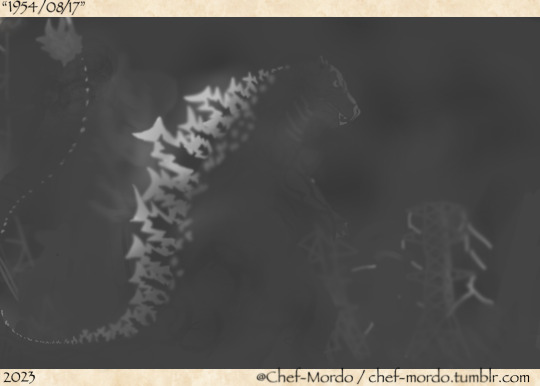
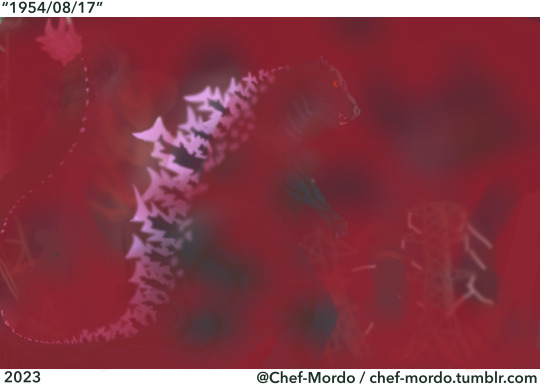
“The demolition of Tokyo”
[This Series is heavily inspired by Trollmans’ “FOLLY OF MAN” series on DeviantArt, so be sure to follow him if you enjoyed my work]
On March 1, 1954 the Castle Bravo hydrogen bomb test was conducted at Bikini Atoll. The first of many thermonuclear weapon tests, it was the largest and most powerful nuclear weapon tested by the US government at the time, a massive mushroom cloud 40 kilometers high rose above the now blazing landscape with a shockwave so large that it shook the land and sea…
Some time afterwards, a spike in radiation was picked up under ten miles off of the northern coast of Palau. When investigations were launched, the wreckage of several burned fishing vessels were found. An additional unusual trail of radiation was discovered leading North. This worried many world powers at the time as it indicated the presence of some unique, powerful source of radiation not yet known to man. The greatest fears of mankind would soon become true. Subsequently, over the following months, several ships in the Pacific Ocean were reported missing. This prompted President Dwight D. Eisenhower to send out the investigative “Monarch Task Force” research team to study the spike in radiation and missing vessels. Eventually, on the night of August 13, 1954, a distress signal from the fishing vessel Eiko Maru was received by the Japanese Coast Guard. Another ship, the Bingo Maru, was sent to investigate the wreckage and rescue any survivors. However, neither ship returned. The following evening, a raft washed ashore on Odo Island. The sole survivor from the wreckage Masaji Yamada told the locals of a bright beam of light consuming the ship. He later reported to Monarch officials that he saw a massive, reptilian shape crest the water before it dove back down into the depths of the sea.
The following morning, the Monarch research team along with JCG officials arrived on Odo island to interview locals and investigate the wreckage. As the boat neared the island, the sea seemed to turn red. Upon arrival, the island had seemed to be shut down; according to locals, an exorcism was performed on the island the previous night after a violent storm had apparently partially destroyed the island. A local elder reported that the island’s ocean deity had been angered and would come to feed off of the islanders. The island mythology states that women had been sacrificed in the past to appease “Gojira” who was stated to be the “King of the Monsters”. A gargantuan footprint was discovered irradiating nuclear energy. Massive aggressive mutated trilobites were additionally found on the shore of the island. Dubbed “Shokkirasu” after insectoid flesh-eating demons from the island’s mythology. The village alarm was later set off, followed by an ear-splitting shrieking roar. A hulking, seemingly saurian figure of titanic proportions rose from the sea on the northwestern side of the island. Japanese paleontologist, Doctor Kyohei Yamane managed to take a photo of the beast raising its ugly head over the hill before it turned to terrorize the town. While many attempted to hide on the island, a few locals managed to escape back on the ships that Monarch and the JCG had taken.
The photo would later be presented to an emergency meeting at the National Diet Building in Tokyo. Doctor Yamane would propose that this creature was awoken by nuclear testing in the South Pacific Ocean and had been the cause of sunken ships throughout the past few months. It had been decided to release this information to the public and in addition, JMSDF forces had been sent to locate and dispatch the creature, now referred to as “Godzilla”. Following this, a fleet of battleships and submarines had been sent into the red, now boiling waters of Tokyo Bay armed with hundreds of depth charges. Eventually, the monster had been located and surrounded by a massive line of explosives. As millions of litres of water shot up into the air, the beast emerged unfazed as it rose onto the shore of Tokyo’s Shinagawa ward. It tore through buildings and ended the lives of at least a thousand. Turning from the rubble, the beast then broke through the aquatic barricade, destroying massive cruisers with little effort.
The following morning another summit was called and it was decided that a line of electrical towers would be built along Tokyo’s coastline. This would send 50,000 volts of electricity into the monster, hopefully ending its life. An emergency evacuation of Tokyo was also called in case that the plan failed. Additionally, due to the previous failed efforts, the USAF had sent 5 “Boeing B-17 Flying Fortress” aircrafts filled with Mark 65 explosives to arrive the following day.
Later that night the primordial horror once again rose from the red, boiling sea. With another air-splitting roar, it crawled onto the shore and tore through the electric fence. Following a bombardment from ground units, it bent over and began to flood Tokyo with a red mist. Seemingly irritated by the constant firing of missiles towards the creature, it’s dorsal plates began to turn from a light pink to a glowing light blue. It faced up towards the sky and shrieked before activating its atomic breath and setting the coastline aflame…
I hope y’all enjoyed the first story-based entry for “GODZILLA: Age of Monsters”. Only one more post for this first chapter focusing on Godzilla’s initial demolition of Tokyo (Alongside a drawing!). Feel free to share any thoughts, questions, praise, or criticisms of my work. As always, likes, comments, and reposts are welcome! The next few posts will be posted at 10:00 AM (CDT) within the following days.
Tune in for more updates and future posts. Peace and love! ✌️🏽
#GODZILLA: Age of Monsters#godzilla#godzilla au#gojira#kaiju#kaiju redesign#godzilla redesign#artwork#art#godzilla fanart#king of the monsters#long post#story#fangoji
12 notes
·
View notes
Text

Chapter 34 of Good Investment is now up on my Patreon!
Good Investment is available at the $5/month tier. People who pledge $5 a month have access to not only Good Investment but The Sponsors series (ongoing), Pretty Things (complete), May the Blood Run Pure (complete), and Kept Man (complete), along with the $1/month tier books, the Reflections trilogy (ongoing) and The Halfwife (ongoing).
Adri Schvaneveldt has always felt split between two worlds. In one world, they are the adopted child of a large and conservative Mormon family. In another, she is the CEO of a burgeoning fashion empire that pushes boundaries. But in order to be the latter, Adri first has to find the funding. After gaining a hefty following as a social media influencer/model, Adri has the potential customers– if they can get a reliable production model pounded out. And that means a bit of groveling at the feet of investors, most of who have never even heard the term “non-binary”.
But Adri lucks out with Gideon Snow, whose youth and open mind bring much needed funds to make Adri’s dream of diverse, accessible fashion a reality. Of course, lifting a newborn company to its feet is no small task, and late nights drive Adri to occasional stays at Gideon’s nearby house, where their relationship begins stretching beyond business. Adri knows they can’t put an entire business venture at risk for the turbulent whims of their heart. But reason doesn’t always win out.
Excerpt:
Adri had hoped to sleep in, but Gideon’s alarm went off at eight-thirty, thus jolting both of them awake. Instead of apologizing and turning it off, Gideon rolled over in bed, grabbed the phone, and then sat up to stare at it a moment before silencing it. Then he slid out of bed, crossing the space between the bed and where he’d put his suitcase.
“You going somewhere?” Adri asked with a yawn, admiring Gideon’s naked body from behind.
“I scheduled us a tour at the Palau de l'Almudaina at 10 today.”
“What’s that?”
“A Spanish palace. I hear the royals aren’t there much though, so it’s mostly a tourist trap. That okay with you?”
“No, it sounds great. I’m just still adjusting to this time zone shift.” Adri flopped back down into their extremely soft pillow, then turned to watch Gideon put on a pair of beige linen slacks. Who had taught this man how to dress? Adri questioned his sexuality more from the fact he knew how to dress than that he was attracted to them. Having grown up around Mormon boys, Adri knew for a fact that none of them knew about the existence of anything other than too-large jeans and polyester suits. Maybe it was because he’d spent so much time in Europe. As he tied the two laces at the waist, he seemed to notice Adri watching him.
“What?” he asked.
“Nothing.” Adri couldn’t contain their goofy smile and rolled onto their stomach to hide half of it with their pillow. “You’re just so beautiful.”
For a second Gideon looked utterly baffled. Then his face grew a little pink before he brushed it off with a, “No one’s called me that before.”
“No? That’s unfortunate.”
“Not really a thing women call men.”
“They should. I’m an equal opportunity complimenter.” Adri watched Gideon a moment before stretching a hand out across the bed. “Come here.”
Gideon dropped the laces on his pants and went to the bed, sliding a leg up onto the mattress and leaning toward Adri. “What?”
“Closer.”
Gideon chuckled and pushed himself closer, close enough to lean down on an elbow and press his nose into Adri’s cheek. “Close enough?”
Adri giggled and grasped his face with both hands, pulling him in for a kiss. The morning breath wasn’t terribly pleasant, but Adri didn’t mind for once. When Gideon pulled back, Adri smiled up at him.
“You’re so pretty and cute and beautiful,” Adri said, and Gideon laughed before kissing her again.
“Don’t get too carried away,” he said softly. “I get the gist.”
2 notes
·
View notes
Text
KE AUPUNI UPDATE - MARCH 2023
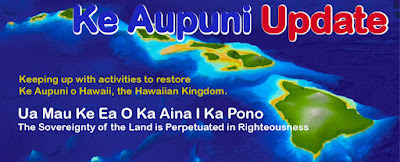
Legacy of Colonialism
A couple of years ago, Alaska and Hawaii held a virtual press conference at the Geneva Press Club to point out the UNʻs double standard regarding colonialism and the right to self-determination. It stirred up some spirited discussion and resulted a few months later with the Human Rights Council (HRC) passing Resolution HRC 48/7, titled: Negative impact of the legacies of colonialism on the enjoyment of human rights. The resolution calls on all UN bodies and UN member states to bring an end to the remaining vestiges of colonialism. The questions are: Is there the political will to do so? And if so, How to go about ending these vestiges of colonialism?
In the open debate about implementation of Resolution 48/7 this past September, about 80% of the Council members made strong statements decrying colonialism. But not a single suggestion was made on how to end colonialism. They all said it will be a difficult, monumental task, thus rationalizing inaction, when actually, decolonization does not have to be complicated at all.
From 2014–2016 the Decolonization Alliance a group that I chaired in New York, held a series of dialogs to jumpstart the United Nationsʻ decolonization process. Some of those talks were sponsored by the United Methodist Church asking what they could do to initiate acts of repentance to make amends for the damage they caused by their involvement in colonialism.
The Methodist Church is a prominent denomination in Palau so a few days after one of those dialogs, I had a conversation with Ambassador Caleb Otto from Palau and asked him what he would recommend the church could do as an act of repentance for its role in colonialism. Without hesitation, he said, “breastfeeding”. I was taken aback and asked, “what do you mean, breastfeeding”?
Ambassador Otto said that as an act of repentance, the Methodist Churches in Palau could start by encouraging young mothers and mothers-to-be, to breastfeed their babies. He said that the incessant decades-long campaign by milk-producing corporations (from colonizing countries) convinced Palauan mothers that baby formula was much better than breast-feeding. This has ruined the health of generations of formula-fed babies, and consequently ruined the health of his nation.
If the church as an act of repentance was to promote breastfeeding it would immediately improve the health of children of Palau, and eliminate many later-in-life diseases, thus strengthening the nation.
More importantly, it would serve to repudiate other insipid, manipulative colonial lies that were used to intimidate and subjugate people by denigrating their indigenous ways and introducing foreign ways that assert, “our way is much better than your way” and “we have come to free you ignorant savages from your miserable lives”...
What are those lies that we swallowed? We are lazy. We are stupid. We are inferior. We are incompetent. Our language, culture and traditional ways are antiquated and irrelevant. Over time, this denigration developed into a deep and pervasive lack of confidence in oneʻs very existence, which in turn developed into the “Stockholm Syndrome” where people lose their own identity, values, lifestyle, culture and take on the identity and attributes of their tormentors.
Itʻs not complicated. As we approach the restoration of the Hawaiian Islands as a sovereign state, we need to huli (flip) the American colonial mindset and habits and restore our peopleʻs identity, dignity and confidence as Hawaiians in a Hawaiian nation...
----------
Ua mau ke ea o ka ʻāina i ka pono. The sovereignty of the land is perpetuated in righteousness.
------
For the latest news and developments about our progress at the United Nations in both New York and Geneva, tune in to Free Hawaii News at
6 PM the first Friday of each month on ʻŌlelo Television, Channel 53.
------
SIGN THIS PETITION…
Rename McKinley High School and remove the McKinley statue! He was the president who turned Hawaii from a peaceful, neutral country into a major hub of America’s war machine. Sign this online petition NOW! Tell everyone you know to sign it too! TinyURL.com/AlohaOeMcKinley
PLEASE KŌKUA…
Your kōkua, large or small, is vital to this effort...
To contribute, go to:
• GoFundMe – CAMPAIGN TO FREE HAWAII
• PayPal – use account email: [email protected]
• Other – To contribute in other ways (airline miles, travel vouchers, volunteer services, etc...) email us at: [email protected]
“FREE HAWAII” T-SHIRTS - etc.
Check out the great FREE HAWAII products you can purchase at...
http://www.robkajiwara.com/store/c8/free_hawaii_products
All proceeds are used to help the cause. MAHALO!
Malama Pono,
Leon Siu
Hawaiian National
3 notes
·
View notes
Text
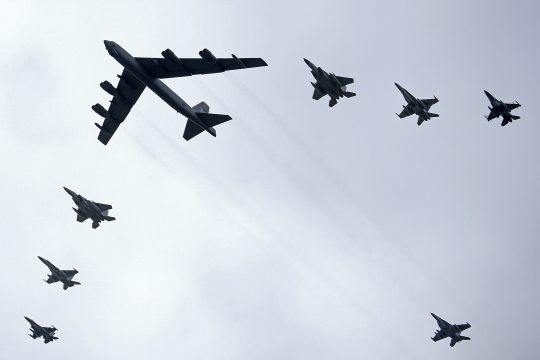
U.S. receives Australian, Japanese and French forces in Guam for the Cope North exercise
Fernando Valduga By Fernando Valduga 01/30/2013 - 12:00 in Military
Air force personnel from three countries began arriving in Guam to establish the multinational command and control task force for the Cope North 2023 exercise, organized by the U.S.
From February 8 to 24, Cope North will bring together about 1,000 U.S. aviators, Marines and sailors alongside 1,000 combined members of the Japan Self-Defense Air Force, the Australian Royal Air Force and the French Air and Space Force at CN23.
About 100 aircraft from the United States, Australia, Japan and France will make 1,200 sorties on seven islands and 10 airfields.

CN23 is a multilateral field training exercise sponsored by the U.S. Pacific Air Forces, focused on trilateral airborne integration for high-force employment, agile combat employment, and training in humanitarian assistance and disaster relief (HA/DR).
Operations will take place at Andersen Air Force Base, Won Pat International Airport and Northwest Field, Guam; Northern Mariana Islands Community, including Rota, Tinian and Saipan; Yap in the Federated States of Micronesia; Iwo To, Japan; and the Republic of Palau.
According to the U.S. Air Force, the objectives of CN23 aim to “ further integrate the contributions of allies and partners to increase security and stability to keep an Indo-Pacific region free and open”.

Specific tactics, techniques and procedures planned during the exercise include performing accurate and challenging trilateral planning, debriefing execution and training in high-strength exercises; emphasizing, validating and improving U.S. ACE capabilities and trilateral detachments in dispersed locations; enabling combat air forces and ACE training requirements through coalition air transportation and continuous logistics operations; and demonstrating safe and effective conduct of
The exercise ends with an HA/DR event that reinforces the combined ability of the military to support any type of disaster in the Indo-Pacific region, including the North Mariana Islands Community, Republic of Palau and Yap in the Federated States of Micronesia.
Established in 1978 as a quarterly bilateral exercise held at Misawa Air Base, Japan, Cope North moved to Andersen Air Base in 1999. It is the largest multilateral exercise of the U.S. Pacific Air Forces.
Tags: Military AviationCope NorthJASDF - Japan Air Self-Defense Force/Japan Self-Defense Air ForceRAAF - Royal Australian Air Force/Royal Australian Air ForceUSAF - United States Air Force / US Air Force
Fernando Valduga
Fernando Valduga
Aviation photographer and pilot since 1992, he participated in several events and air operations, such as Cruzex, AirVenture, Dayton Airshow and FIDAE. He has works published in specialized aviation magazines in Brazil and abroad. He uses Canon equipment during his photographic work in the world of aviation.
Related news
MILITARY
Guyana Defense Force will buy two HAL Dornier 228 utility aircraft from India
30/01/2023 - 16:00
MILITARY
U.S. Navy starts MQ-4C Triton antifreeze tests
30/01/2023 - 15:00
MILITARY
Aeralis signs agreement with AirTanker to evaluate new jet pilot training system
30/01/2023 - 14:00
MILITARY
Boeing receives $2.25 billion for 15 KC-46A refuelling aircraft
30/01/2023 - 11:00
MILITARY
China will retire its MiG-21 clone this year
30/01/2023 - 08:20
Boeing's proposal in USAF's CX-HLS program in the 1960s.
HISTORY
CX-HLS, the program that helped Boeing develop the 747
29/01/2023 - 22:02
Cavok Twitter
homeMain PageEditorialsINFORMATIONeventsCooperateSpecialitiesadvertiseabout
Cavok Brazil - Digital Tchê Web Creation
Commercial
Executive
Helicopters
HISTORY
Military
Brazilian Air Force
Space
Specialities
Cavok Brazil - Digital Tchê Web Creation
5 notes
·
View notes
Text
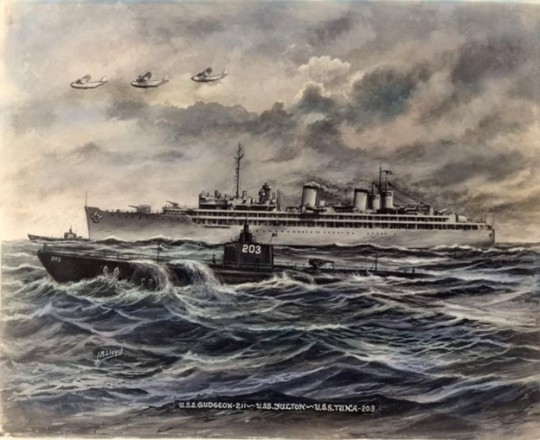
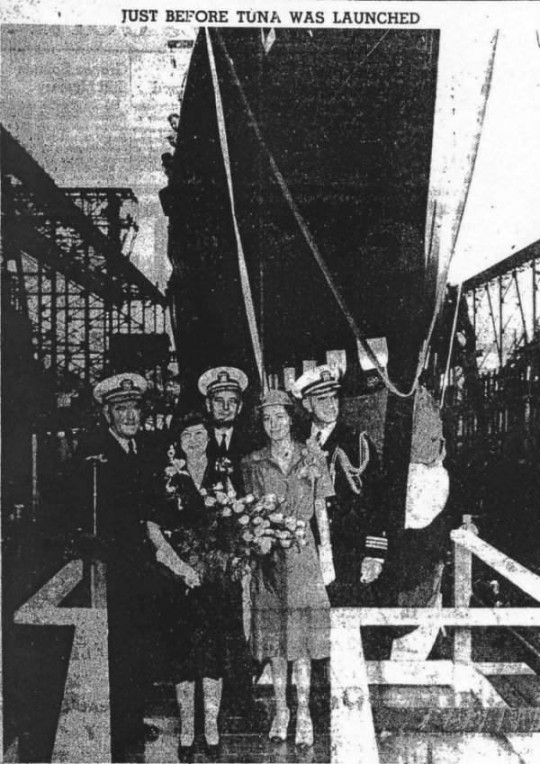
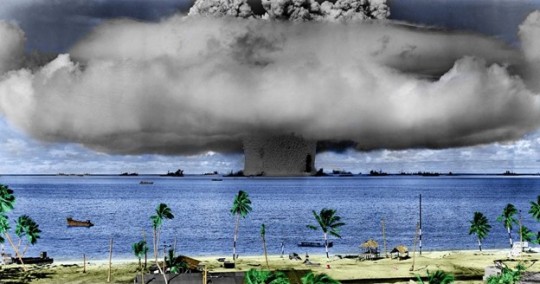
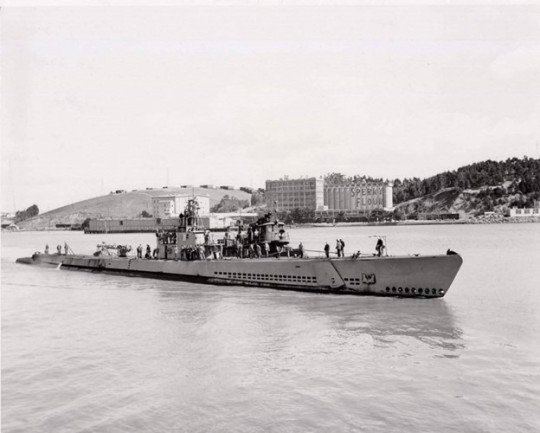
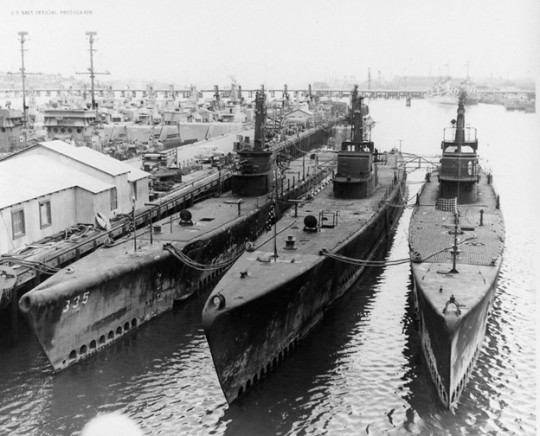
Unsinkable
the USS Tuna (SS-203) is an example of durability of a submarine built at Mare Island. The Japanese couldn’t sink her, friendly fire couldn’t, and nuclear weapons were not up to the task. In the end only the U.S. Navy could sink her when it was decided to scuttle her. USS Tuna was a United States Navy Tambor-class submarine launched at Mare Island on October 2 in 1940 as part of an arms build-up as the world grew ever more consumed by war. She served throughout the Pacific during World War II and earned seven battle stars. After the war, she was used as a test platform during the Bikini Atoll atomic bomb testing in 1946.
Tuna departed San Diego, California, on 19 May 1941 for Pearl Harbor and shakedown training. In one of those rare moments when adversity is twisted into opportunity the operations in Hawaiian waters revealed that the submarine's torpedo tubes were misaligned. This builder’s flaw took a positive turn when correcting the problem necessitated her returning to Mare Island for repairs. During the Japanese attack on Pearl Harbor on 7 December 1941, Tuna lay safely in drydock at Mare Island. Following repairs, she set out for Pearl Harbor an war patrols on 7 January 1942.
Tuna conducted 13 war patrols in the East China Sea, the Japanese home islands, the Aleutian Islands, the waters off the east coast of Vella LaVella; off New Ireland and Buka, and the Bismarck Archipelago, off Lyra Reef, on the northeast side of New Ireland. In mid-1943, as Tuna set out from Brisbane on her eighth patrol, a Royal Australian Air Force patrol bomber attacked her, dropping three bombs close aboard. The resultant damage necessitated 17 days of major repairs at Brisbane, delaying her departure for the eighth patrol. She then set off for the East Caroline Basin on the traffic lanes to Rabaul, and the Java Sea and Flores Sea before returning to Hunters Point Navy Yard in California, where she arrived on 6 April 1944 for a major overhaul. After refitting, she headed for the Palau Islands. Tuna roamed the sea lanes of the Japanese home islands, off Shikoku and Kyūshū. She then supported the invasion and liberation of the Philippines.
Tuna’s final war patrol began on 6 January as she left Saipan to take position off the west coast of Borneo. From 28 January to 30 January 1945, Tuna conducted a special mission, reconnoitering the northeast coast of Borneo. She did not attempt a landing due to enemy activity. From 2 March to 4 March, Tuna accomplished her second special mission of the patrol, landing personnel and 4400 pounds of stores near Labuk Bay.
Following the war Tuna was selected as a target vessel for the upcoming atomic bomb tests at Bikini Atoll in the Marshall Islands. Tuna was assigned a place among the target vessels anchored in the atoll. The first atomic bomb was detonated on 1 July 1946, and the second followed 24 days later. Receiving only superficial damage, following the Atomic bomb test Tuna was decommissioned on 11 December 1946, she was retained as a radiological laboratory unit and subjected to numerous radiological and structural studies while remaining at Mare Island. She was then towed from Mare Island for the submarine's "last patrol." On 24 September 1948, Tuna was sunk in 1,160 fathoms (6,960 ft) of water off the West Coast and struck from the Naval Vessel Register on 21 October 1948.
#mare island#naval history#san francisco bay#us navy#vallejo#submarine#world war 2#world war ii#world war two#Tuna#Unsinkable#atomic bomb#Bikini#Scuttle
0 notes
Text
Functioning of the "grain corridor"
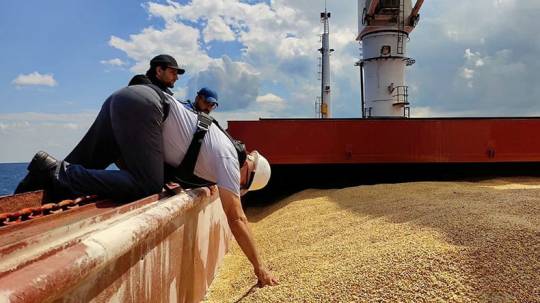
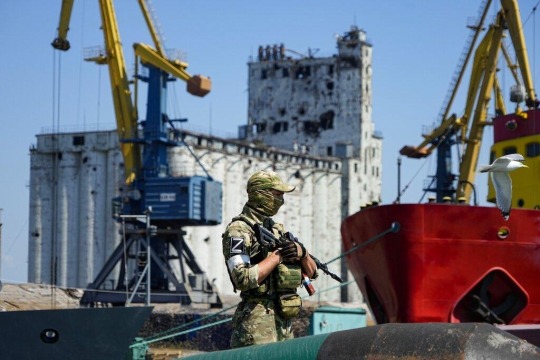
For the first time since Russia's withdrawal from the "grain initiative" in July 2023, two Turkish bulk carriers entered the port of Chornomorsk for loading grain. According to the Ministry of Community, Territory and Infrastructure Development of Ukraine, the bulk carriers Resilient Africa and Aroyat under the flag of Palau, they used a temporary corridor at the entrance to the port of Chornomorsk to load almost 20 thousand tons of wheat destined for African and Asian countries. The crew of the vessels consists of citizens of Turkey, Azerbaijan, Egypt and Ukraine. Previously, the corridor was used to evacuate ships that were in the Ukrainian ports of Chornomorsk, Odessa and Yuzhny at the time of the full-scale invasion of the Russian Federation. Since August 15, 5 vessels have used the temporary corridor: the container ship Joseph Schulte, the bulk carriers Primus, Anna-Theresa, Ocean Courtesy and Puma.
Ukraine remains true to its obligations to importers and implements a strategy and tactics to demonstrate the creation of a "grain corridor" without Russia. Ukraine continues to actively export grain through the river ports of the Danube and by land to European consumers or to the ports of the EU countries for further transportation. Since the beginning of the grain season, in July-August, Ukraine has exported about 5 million tons, which corresponds to the level of last year. Probably, it will realize all or almost all of the export potential even if the Black Sea grain terminals do not work at full capacity. In addition, the Ukrainian authorities still hope for the unblocking of these terminals without approval from Moscow.
The main task of Ukraine after leaving the ports of Greater Odessa will be to ensure the safety of ships and crews. The situation in the Black Sea is monitored by British reconnaissance aircraft, and a sea surface kamikaze drone patrols near Snake Island. In addition, the state budget of Ukraine for the current year provides 20 billion hryvnias for insurance of ships that will be ready to export agricultural products from the Black Sea ports of Ukraine. In general, step by step, Ukraine is doing everything possible within the framework of its resources and capabilities in order to ensure the export of Ukrainian agricultural products by the Black Sea. The call of two Turkish bulk carriers to the port of Chornomorsk indicates that cargo carriers are ready to use the new sea corridor for the transportation of agricultural products, and not just for the evacuation of ships from Ukraine.
What should be the reaction of the civilized world to the ongoing grain blackmail of the Russian Federation? Firstly, no alternative options for grain deals can be concluded with the Russian Federation. NATO should be decisive and announce the convoy of grain carriers. Security guarantees must pass the test of grain exports. If the U.S. and NATO can protect Ukrainian grain, so can Ukraine.
0 notes
Text
Www mixlr com omegamanradio

Www mixlr com omegamanradio install#
Www mixlr com omegamanradio update#
Www mixlr com omegamanradio professional#
Www mixlr com omegamanradio free#
Join me in the Attack on the Hosts of Hell in 2019 As God provides we plan to also fund the School of Deliverance meetings held Internationally and also hope to fund some underground church projects. We plan to start first in NYC and then branch over into Atlanta, Las Vegas and Los Angeles. I have started a War Chest to fund our first conference for 2019 and the target I am aiming for is to ramp up to a monthly meeting some place in the world every month. I praise God for this opportunity and for all of you who listen into the show and for the speakers that bring fresh bread each day on air. Sleep is scarce today but much work needs to be done and is being done cutting audios and scheduling new broadcasts along with other tasks necessary to keep the network going. God willing we will be able to fund more time in the future and it is my hope that we will add additional slots and eventually blanket the globe with a broadcast that is not dependent on the internet and is censorship proof.įriends after a 19 day absence the Marathon is officially back this week and today we broadcasted 11 hours and produced 7 shows today alone and more coming every day Mon-Sat. PRAISE THE LORD JESUS CHRIST for 13 shots He has given us to fire the Gospel into enemy controlled territory where demons rule and to be a christian comes with heavy persecution in many places. Official Website of omega man radio and OMEGA MAN RADIO Network and OMEGAMAN Magazineįriends I am happy to report that we have raised enough funds to finance 13 weeks of airtime on The World Harvest Network and will be broadcasting at 100kW into Communist Controlled Red China, India, Phillipinnes, Japan and am told will even reach the shores of Europe with the signal which will air at 8:00pm MAINLAND CHINA time beginning in February. Like to help us? give over at God bless you mightily in Jesus Christ NameĬopyright © 2019 Omega Man Radio, All rights reserved. I also hope to be able to stream it worldwide via youtube.
Www mixlr com omegamanradio free#
We are looking at the cost to rent a 600 seat building for two days, buy a ticket for the speaker to come in and need to do advertising in the love Express and via Youtube to alert people to the FREE EVENT. It is the plan to target Midtown NYC and Watchmen Radio and I will be partnering to kick these off in the next 60-90 days should the war chest have funds to finance this campaign. I am ready to launch Phase 3 of the ministry and fund Deliverance Meetings in the USA. I will be setting up a War Chest for these efforts this week for anyone who would like to partner with me to pay for this War on the Hosts of Hell to win souls for Jesus Christ. It is my desire next to target all of Europe and potentially go into Russia as well. Thank you to all who supported the War Chest to raise funds to pay for 13 weeks of airtime on the Palau Transmitter which will take the broadcast into Red communist China, Northern india, Japan and parts of the Philippines beginning in February. I signed the contract on World Harvest ! 🙏🔥 To find out more about starting a new event, check out our help center.Omega man radio network and omegaman magazine Continue to the start button, and you’re live!.
Www mixlr com omegamanradio update#
Add a broadcast title (plus artwork to automatically update your Mixlr Livepage).
Choose to start your new event now, or schedule for later.
You can go live whenever you want to or schedule broadcasts well in advance, and your Mixlr Livepage will reflect your new event: We wanted to make it easier to incorporate events in your Creators toolset. Whether producing an episodic talk show, seasonal game series, a concert tour, or weekly religious services - your broadcasts are usually based on events. Don’t miss out on the latest improvements!
Www mixlr com omegamanradio install#
You’ll see a notification in the app informing you to install the latest version. (And this is just the first wave of updates to come!) With Events, you can schedule upcoming shows, promote customized event pages and start pre-scheduled broadcasts directly from the app.
Www mixlr com omegamanradio professional#
the Events feature to boost your professional live audio experience.
an improved audio engine for better third-party device support.
Mixlr for Creators v32 on desktop has just been released and features a host of improvements: The start of many updates for your desktop application

0 notes
Text
Canon ip3000 print heads

Simply keep printing until the ink flows freely through the head.Excludes: Bahrain, Jordan, Kuwait, Lebanon, Oman, Qatar, Turkey, Algeria, Angola, Botswana, Cameroon, Egypt, Ghana, Kenya, Malawi, Mauritius, Mayotte, Morocco, Mozambique, Namibia, Nigeria, Reunion, Rwanda, Senegal, Seychelles, Tanzania, Tunisia, Uganda, Zambia, Zimbabwe, Greenland, Saint Pierre and Miquelon, United States, Armenia, Azerbaijan Republic, China, Georgia, India, Kazakhstan, Maldives, Pakistan, Sri Lanka, Albania, Andorra, Bosnia and Herzegovina, France, Gibraltar, Guernsey, Iceland, Jersey, Macedonia, Montenegro, Serbia, Brunei Darussalam, Cambodia, Hong Kong, Indonesia, Taiwan, Cook Islands, Fiji, French Polynesia, Guam, New Caledonia, Palau, Papua New Guinea, Vanuatu, Argentina, Bolivia, Brazil, Chile, Colombia, Ecuador, French Guiana, Peru, Uruguay, Venezuela, Barbados, Belize, British Virgin Islands, Costa Rica, Dominican Republic, El Salvador, Guadeloupe, Guatemala, Honduras, Jamaica, Martinique, Nicaragua, Panama, Puerto Rico, Saint Lucia, Saint Vincent and the Grenadines, Trinidad and Tobago, Virgin Islands (U.S. You may find after cleaning that it takes a while for the ink to flow again. Next attach the ribbon cable (where applicable) and re-install the print head. For Canon i560, iP3000, i850, MP700, MP730. This can best be done using a hair dryer. Move the paper thickness lever to the left, and load a sheet of A4 or letter size paper in the auto sheet feeder. To print the nozzle check pattern, do the following. Do print head cleaning only when necessary. Once it is fully clear then make sure that the print head is dry before installing. Note: Print head cleaning consumes a certain amount of ink. Keep the water flowing until the water coming out the bottom is completely clean. Hold the print head upright (same as it sits in the printer) and let the hot water pour into the head until you see the old ink flowing out the bottom of the print head. Next simply flush the print head out under your hot water tap.ĭon't pay too much attention to the guy in the video as its mainly there to demonstrate how the print head is removed. Simply remove your inkjet cartridges and then unclip the print head as shown in the video below. Most of the Canon Printers have a 'removable Print Head' as seen in the video below. Next simply flush the print head out under your hot water tap. Printheads are classified as spare parts and as such do not. QY6-0042-000 (Discontinued) - Superseded by part QY6-0064-000 Printhead The iP3000 printer now uses a QY6-0064-000 Canon Printhead. When the dialog opens, select the ink group for which deep cleaning is to be performed. Canon iP3000 The Canon iP3000 is easy to place anywhere and effortless to use, this printer meets all your photo and document printing needs perfectly. Select Cleaning from the pop-up menu on the Canon IJ Printer Utility2. Perform deep cleaning when two Cleaning attempts do not resolve the print head problem. Simply remove your inkjet cartridges and then unclip the print head as shown in the video below. Deep Cleaning is more thorough than cleaning. Most of the Canon Printers have a removable Print Head as seen in the video below. Cleaning the Print Head on a Canon Printer is quite an easy task. Cleaning the Print Head on a Canon Printer is quite an easy task.

0 notes
Text
Merchants of kaidan s team

Buy low, sell high - a merchant's motto is easy to grasp. Your task is to roam the world and search of opportunities to score some profit. You start very humble, one cart, a purse of gold and silver coins is all that you have. Merchants of Kaidan is a challenging trading game fused with lots of RPG elements. Regain your riches, restore your honor and punish those who have wronged you. RegionsÅland Islands, Albania, Algeria, Andorra, Angola, Anguilla, Antarctica, Antigua and Barbuda, Argentina, Armenia, Aruba, Australia, Austria, Azerbaijan, Bahrain, Bangladesh, Barbados, Belarus, Belgium, Belize, Benin, Bermuda, Bhutan, Bolivia, plurinational state of, Bosnia and Herzegovina, Bouvet Island, Brazil, British Indian Ocean Territory, Brunei Darussalam, Bulgaria, Burkina Faso, Burma, Burundi, Cambodia, Cameroon, Canada, Cape Verde, Cayman Islands, Central African Republic, Chad, Chile, China, Christmas Island, Cocos (Keeling) Islands, Colombia, Comoros, Congo, Congo, Democratic Republic of the, Cook Islands, Costa Rica, Cote d'Ivoire, Croatia, Cuba, Curaçao, Cyprus, Czech Republic, Denmark, Djibouti, Dominica, Dominican Republic, Ecuador, Egypt, El Salvador, Equatorial Guinea, Eritrea, Estonia, Falkland Islands (Malvinas), Faroe Islands, Fiji, Finland, France, French Guiana, French Polynesia, French Southern Territories, Gabon, Gambia, Georgia, Germany, Gibraltar, Greece, Greenland, Grenada, Guadeloupe, Guatemala, Guernsey, Guinea, Guinea-Bissau, Guyana, Haiti, Heard Island and McDonald Islands, Holy See (Vatican City State), Honduras, Hong Kong, Hungary, Iceland, India, Ireland, Isle of Man, Israel, Italy, Jamaica, Japan, Jersey, Jordan, Kazakhstan, Kenya, Kiribati, Korea, Republic of, Kuwait, Kyrgyzstan, Lao People's Democratic Republic, Latvia, Lebanon, Lesotho, Liberia, Liechtenstein, Lithuania, Luxembourg, Macao, Madagascar, Malawi, Malaysia, Maldives, Mali, Malta, Marshall Islands, Martinique, Mauritania, Mauritius, Mayotte, Mexico, Micronesia, Federated States of, Moldova, Monaco, Mongolia, Montenegro, Montserrat, Morocco, Mozambique, Namibia, Nauru, Nepal, Netherlands, New Caledonia, New Zealand, Nicaragua, Niger, Niue, Norfolk Island, Northern Mariana Islands, Norway, Oman, Palau, Palestinian Territory, Occupied, Papua New Guinea, Paraguay, Peru, Philippines, Pitcairn, Poland, Portugal, Qatar, Republic of North Macedonia, Reunion, Romania, Russian Federation, Rwanda, Saint Barthélemy, Saint Helena, Ascension And Tristan Da Cunha, Saint Kitts and Nevis, Saint Lucia, Saint Martin (French Part), Saint Pierre and Miquelon, Saint Vincent and the Grenadines, San Marino, Sao Tome and Principe, Senegal, Serbia, Seychelles, Sierra Leone, Singapore, Sint Maarten, Slovakia, Slovenia, Solomon Islands, Somalia, South Africa, South Georgia and the South Sandwich Islands, South Sudan, Spain, Sudan, Suriname, Svalbard and Jan Mayen, Swaziland, Sweden, Switzerland, Taiwan, Province of China, Tajikistan, Tanzania, United Republic Of, Thailand, Timor-Leste, Togo, Tokelau, Tonga, Turkey, Turkmenistan, Turks and Caicos Islands, Tuvalu, Uganda, Ukraine, United Arab Emirates, United Kingdom, United States, United States Minor Outlying Islands, Uruguay, Uzbekistan, Vanuatu, Venezuela, Vietnam, Virgin Islands, British, Wallis and Futuna, Western Sahara, Zambia, Zimbabwe

0 notes
Photo

[TASK 179: PALAU]
There’s a masterlist below compiled of over 130+ Palauan faceclaims categorised by gender with their occupation and ethnicity denoted if there was a reliable source. If you want an extra challenge use random.org to pick a random number! Of course everything listed below are just suggestions and you can pick whichever faceclaim or whichever project you desire.
Any questions can be sent here and all tutorials have been linked below the cut for ease of access! REMEMBER to tag your resources with #TASKSWEEKLY and we will reblog them onto the main! This task can be tagged with whatever you want but if you want us to see it please be sure that our tag is the first five tags, @ mention us or send us a messaging linking us to your post!
THE TASK - scroll down for FC’s!
STEP 1: Decide on a FC you wish to create resources for! You can always do more than one but who are you starting with? There are links to masterlists you can use in order to find them and if you want help, just send us a message and we can pick one for you at random!
STEP 2: Pick what you want to create! You can obviously do more than one thing, but what do you want to start off with? Screencaps, RP icons, GIF packs, masterlists, PNG’s, fancasts, alternative FC’s - LITERALLY anything you desire!
STEP 3: Look back on tasks that we have created previously for tutorials on the thing you are creating unless you have whatever it is you are doing mastered - then of course feel free to just get on and do it. :)
STEP 4: Upload and tag with #TASKSWEEKLY! If you didn’t use your own screencaps/images make sure to credit where you got them from as we will not reblog packs which do not credit caps or original gifs from the original maker.
THINGS YOU CAN MAKE FOR THIS TASK - examples are linked!
Stumped for ideas? Maybe make a masterlist or graphic of your favourite faceclaims. A masterlist of names. Plot ideas or screencaps from a music video preformed by an artist. Masterlist of quotes and lyrics that can be used for starters, thread titles or tags. Guides on culture and customs.
Screencaps
RP icons [of all sizes]
Gif Pack [maybe gif icons if you wish]
PNG packs
Manips
Dash Icons
Character Aesthetics
PSD’s
XCF’s
Graphic Templates - can be chara header, promo, border or background PSD’s!
FC Masterlists - underused, with resources, without resources!
FC Help - could be related, family templates, alternatives.
Written Guides.
and whatever else you can think of / make!
MASTERLIST!
F:
Brenda Bari (1979) Palauan, Chamorro, Italian - model and bodybuilder.
Sha Merirei / C. Merirei Ongelungel (1983) Palauan - radio host, podcast host, Miss Palau LGBTQ 2014, and artist.
Geana Stark (?) Palauan, Mexican, Unspecified White - model and makeup artist.
Sistah Lubei / Lubei Cavin (?) Palauan - singer.
Jenelle Iwang (?) Palauan - singer.
Lisa Sandei (?) Palauan - singer.
Christy Sakaziro (?) Palauan - singer.
F - Athletes:
Jennifer Anson (1977) Palauan - judoka.
Peoria Koshiba (1979) Palauan - sprinter.
Carissa Subris (1982) Palauan - high jumper.
Ngerak Florencio (1983) Palauan - sprinter.
Nicole Hayes (1984) Palauan - swimmer.
Avon Grace Mazo (1987) Palauan - sprinter.
Anastasia Kikuharu (1988) Palauan - weightlifter.
Evelyn Otto (1989) Palauan - swimmer.
Amber Yobech (1991) Palauan - swimmer.
Maria Gibbons (1993) Palauan - swimmer.
Ruby Joy Gabriel (1994) Palauan - sprinter.
Marina Toribiong (1994) Palauan - canoeist.
Keesha Keane (1995) Palauan - swimmer.
Osisang Chilton (1996) Palauan - swimmer.
Dirngulbai Misech (1997) Palauan - swimmer.
Ayana Rengiil (1999) Palauan - tennis player.
Roylin Akiwo (2000) Palauan - swimmer.
Maura Ngirmechaet (?) Palauan - sprinter.
Joy Kukumai Ueki Uong (?) Palauan - canoeist.
Hila Asanuma (?) Palauan - volleyball player.
Jacqualine Ngirdimau (?) Palauan - canoeist.
Maleah Umerang Tengedik (?) Palauan - javelin thrower.
Zoya Renguul (?) Palauan - table tennis player.
Debra Ann Toriboing (?) Palauan - canoeist.
Ikelau Misech (?) Palauan - swimmer.
Pkngey Otobed (?) Palauan - canoeist.
Barbara Gbewonyo (?) Palauan - triple jumper.
Holly Yamada (?) Palauan - volleyball player.
Jaqueline Keri Telli (?) Palauan - sprinter.
Pauleen Kumangai (?) Palauan - canoeist.
Christina Wicker (?) Palauan - sprinter.
Felicia Saburo (?) Palauan - long jumper.
Elsei Diane Tellei (?) Palauan - canoeist.
Corrine Hideos (?) Palauan - hammer thrower.
Dannette Ricky (?) Palauan - sprinter.
Chandis Cooper (?) Palauan - shot putter and discus thrower.
M:
Halley Eriich (?) Palauan - singer.
Kendall Titiml (?) Palauan - singer.
Tim Sameke (?) Palaun, Fijian, I-Kiribati, New Caledonian - singer.
DJ Darxide (?) Palauan, Tongan, Papuan New Guinean, Solomon Islander, Fijian - DJ.
Walker Miner (?) Palauan - model.
Darren Clift (?) Palauan, Japanese, Unspecified White - singer.
M - Athletes:
John Tarkong (1965) Palauan - wrestler.
Toni Illilau (1969) Palauan - footballer.
Mohoshin Miah (1973) Palauan - footballer.
Russel Roman (1975) Palauan - sprinter.
Malakai Bitu (1976) Palauan - footballer.
Christopher Adolf (1976) Palauan - sprinter.
Edward Kenic (1978 or 1979) Palauan - archer.
Brandon Giramur (1981) Palauan - archer.
Charles Reklai Mitchell (1982) Palauan - footballer.
Jesse Tamangrow (1982) Palauan - sprinter.
Leif Toribiong (1984) Palauan - footballer.
Elgin Loren Elwais (1985) Palauan - wrestler.
Armando Canseco (1985) Palauan - footballer.
Florian Skilang Temengil (1986) Palauan - wrestler.
Nicholas Mangham (1986) Palauan - weightlifter.
Sergio Ngiraingas (1988) Palauan - footballer.
Leon Mengloi (1989) Palauan - sprinter.
McGee Mereb (1989) Palauan - footballer.
Robert Victor Bishop Jr. (1990) Palauan - footballer.
Scott Skebong (1990) Palauan - footballer.
Christopher Ongrung (1991) Palauan - archer.
Stevick Patris (1991) Palauan - weightlifter.
Edson Ngiraiwet (1991) Palauan - volleyball player.
Dougwin Franz (1991) Palauan - javelin thrower.
Youri Ito (1992) Palauan - footballer.
Dims Tewid (1992) Palauan - footballer.
Joe Carlos (1992) Palauan - footballer.
Francis Tkel (1992) Palauan - sprinter.
Mac Sasao (1992) Palauan - footballer.
Jimmy Jonas (1992) Palauan - footballer.
Cristian Nicolescu (1993) Palauan - wrestler.
Shawn Dingilius-Wallace (1994) Palauan - swimmer.
Mechesengel Roman (1994) Palauan - footballer.
Skarlee Renguul (1994) Palauan - wrestler.
Christian Etpison Nicolescu (1994) Palauan - footballer.
Rodman Teltull (1994) Palauan - sprinter.
Mavrick Faustino (1994) Palauan - weightlifter.
Dexter Decherong (1995) Palauan - footballer.
Bligh Madris (1996) Palauan - baseball player.
Jarvis Tarkong (1996) Palauan - judoka.
Gwynn Uehara (1997) Palauan - sprinter.
James Dydasco (1998) Palauan - wrestler.
Paulus Ngirngesechei (1998) Palauan - footballer.
Noel Keane (2002) Palauan - swimmer.
Reagan Sidoi (?) Palauan - baseball player.
Conrad Rdechor (?) Palauan - sprinter.
Kalson Dulei (?) Palauan - baseball player.
Donovan Helvey (?) Palauan - high jumper.
Ryon Gaines (?) Palauan - sprinter.
Antonio Ngiralmau (?) Palauan - baseball player.
Marcus Hangaripai (?) Palauan - sprinter.
William Mgirakelau (?) Palauan - triple jumper.
Tutii Chilton (?) Palauan - archer.
Lantz Ngiramengior (?) Palauan - baseball player.
Elias Aguon (?) Palauan - table tennis player.
Melngis Andre Uchel (?) Palauan - baseball player.
Shaquille Teltull (?) Palauan - sprinter.
Avery Amos Olkebai (?) Palauan - baseball player.
O'Quinn Sakuma (?) Palauan - canoeist.
Blaluk Conseko Anthony (?) Palauan - baseball player.
Texxon Taro (?) Palauan - volleyball player.
Lieb Kubek Bells (?) Palauan - baseball player.
Malcolm Gaymann (?) Palauan - judoka.
Rodrick Aquino Blanco (?) Palauan - baseball player.
Kingsley Ngirmidol (?) Palauan - volleyball player.
Joab Kanai (?) Palauan - sprinter.
Herman Alfonso (?) Palauan - baseball player.
Galileo Saiske (?) Palauan - hammer thrower.
L'Amour Lansang Arurang (?) Palauan - baseball player.
Jacques Stills (?) Palauan - sprinter.
O'leary Wataru Ise (?) Palauan - baseball player.
Richard Madrekewet (?) Palauan - sprinter.
Dillon Meriang (?) Palauan - table tennis player.
Anthony Singichi (?) Palauan - sprinter.
Carter Smau Kahue (?) Palauan - baseball player.
John Stills (?) Palauan - sprinter.
Royce Elbuchel Sadang (?) Palauan - baseball player.
Filomena Ngirabedul (?) Palauan - pole vaulter.
Samuel Saunders (?) Palauan - table tennis player.
Christopher Kenty (?) Palauan - hurdler.
Raynold Bkudasu Sadang (?) Palauan - baseball player.
Joynal Mize (?) Palauan - sprinter.
Dmitri Villanueva (?) Palauan - weightlifter.
Brook Kinz (?) Palauan - sprinter.
Isimang Tillion Smus (?) Palauan - baseball player.
Douglas Schmidt (?) Palauan - sprinter.
Christopher Carlos (?) Palauan - volleyball player.
Jersey Lyar (?) Palauan - sprinter.
6 notes
·
View notes
Text
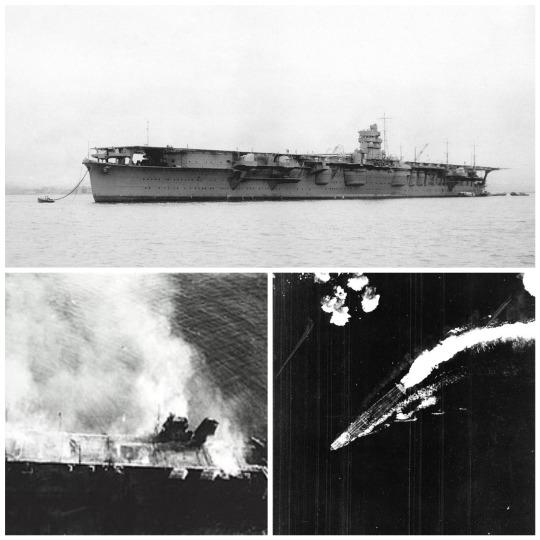
• IJN Aircraft Carrier Hiryū
Hiryū (飛龍, "Flying Dragon") was an aircraft carrier built for the Imperial Japanese Navy (IJN) during the 1930s. Generally regarded as the only ship of her class, she was built to a modified Sōryū design.
Hiryū was one of two large carriers approved for construction under the 1931–32 Supplementary Program. Originally designed as the sister ship of Sōryū, her design was enlarged and modified in light of the Tomozuru and Fourth Fleet Incidents in 1934–1935 that revealed many IJN ships were top-heavy, unstable and structurally weak. Her forecastle was raised and her hull strengthened. Other changes involved increasing her beam, displacement, and armor protection. The ship had a length of 227.4 meters (746 ft 1 in) overall, a beam of 22.3 meters (73 ft 2 in) and a draft of 7.8 meters (25 ft 7 in). She displaced 17,600 metric tons (17,300 long tons) at standard load and 20,570 metric tons (20,250 long tons) at normal load. Her crew consisted of 1,100 officers and enlisted men. Hiryū was fitted with four geared steam turbine sets with a total of 153,000 shaft horsepower (114,000 kW). Hiryū carried 4,500 metric tons (4,400 long tons) of fuel oil which gave her a range of 10,330 nautical miles (19,130 km; 11,890 mi) at 18 knots (33 km/h; 21 mph). The boiler uptakes were trunked to the ship's starboard side amidships and exhausted just below flight deck level through two funnels curved downward.
The carrier's 216.9-meter (711 ft 7 in) flight deck was 27 meters (88 ft 6 in) wide and overhung her superstructure at both ends, supported by pairs of pillars. Hiryū was one of only two carriers ever built whose island was on the port side of the ship (Akagi was the other). It was also positioned further to the rear and encroached on the width of the flight deck, unlike Sōryū. The flight deck was only 12.8 meters (42 ft) above the waterline and the ship's designers kept this figure low by reducing the height of the hangars. The upper hangar was 171.3 by 18.3 meters (562 by 60 ft) and had an approximate height of 4.6 meters (15 ft); the lower was 142.3 by 18.3 meters (467 by 60 ft) and had an approximate height of 4.3 meters (14 ft). Together they had an approximate total area of 5,736 square meters (61,740 sq ft). This caused problems in handling aircraft because the wings of a Nakajima B5N "Kate" torpedo bomber could neither be spread nor folded in the upper hangar. Aircraft were transported between the hangars and the flight deck by three elevators, the forward one abreast the island on the centerline and the other two offset to starboard.
Hiryū's primary anti-aircraft (AA) armament consisted of six twin-gun mounts equipped with 12.7-centimeter Type 89 dual-purpose guns mounted on projecting sponsons, three on either side of the carrier's hull. When firing at surface targets, the guns had a range of 14,700 meters (16,100 yd); they had a maximum ceiling of 9,440 meters (30,970 ft) at their maximum elevation of +90 degrees. Their maximum rate of fire was 14 rounds a minute, but their sustained rate of fire was approximately eight rounds per minute. The ship was equipped with two Type 94 fire-control directors to control the 12.7-centimeter (5.0 in) guns, one for each side of the ship; the starboard-side director was on top of the island and the other director was positioned below flight deck level on the port side. The ship's light AA armament consisted of seven triple and five twin-gun mounts for license-built Hotchkiss 25 mm Type 96 AA guns. Two of the triple mounts were sited on a platform just below the forward end of the flight deck. Hiryū had a waterline belt with a maximum thickness of 150 millimeters (5.9 in) over the magazines that reduced to 90 millimeters (3.5 in) over the machinery spaces and the gas storage tanks. It was backed by an internal anti-splinter bulkhead. The ship's deck was 25 millimeters (0.98 in) thick over the machinery spaces and 55 millimeters (2.2 in) thick over the magazines and gas storage tanks.
Following the Japanese ship-naming conventions for aircraft carriers, Hiryū was named "Flying Dragon". The ship was laid down at the Yokosuka Naval Arsenal on July 8th, 1936, launched on November 16th, 1937 and commissioned on July 5th, 1939. She was assigned to the Second Carrier Division on November 15th. In September 1940, the ship's air group was transferred to Hainan Island to support the Japanese invasion of French Indochina. In February 1941, Hiryū supported the blockade of Southern China. Two months later, the 2nd Carrier Division, commanded by Rear Admiral Tamon Yamaguchi, was assigned to the First Air Fleet, or Kido Butai, on April 10th. Hiryū returned to Japan on August 7th and began a short refit that was completed on September 15th. She became flagship of the Second Division from September 22nd to October 26th while Sōryū was refitting. In November 1941, the IJN's Combined Fleet, commanded by Admiral Isoroku Yamamoto, prepared to participate in Japan's initiation of a formal war with the United States by conducting a preemptive strike against the United States Navy's Pacific Fleet base at Pearl Harbor, Hawaii. On November 22nd, Hiryū, commanded by Captain Tomeo Kaku, and the rest of the Kido Butai, under Vice Admiral Chuichi Nagumo and including six fleet carriers from the First, Second, and Fifth Carrier Divisions, assembled in Hitokappu Bay at Etorofu Island. The fleet departed Etorofu, and followed a course across the north-central Pacific to avoid commercial shipping lanes. Now the flagship of the Second Carrier Division, the ship embarked 21 Mitsubishi A6M Zero fighters, 18 Aichi D3A "Val" dive bombers, and 18 Nakajima B5N "Kate" torpedo bombers. From a position 230 nmi (430 km; 260 mi) north of Oahu, Hiryū and the other five carriers launched two waves of aircraft on the morning of December 7th, 1941 Hawaiian time. In the first wave, 8 B5N torpedo bombers were supposed to attack the aircraft carriers that normally berthed on the northwest side of Ford Island, but none were in Pearl Harbor that day; 4 of the B5N pilots diverted to their secondary target, ships berthed alongside "1010 Pier" where the fleet flagship was usually moored. That ship, the battleship Pennsylvania, was in drydock and its position was occupied by the light cruiser Helena and the minelayer Oglala; all four torpedoes missed. The other four pilots attacked the battleships West Virginia and Oklahoma. The remaining 10 B5Ns were tasked to drop 800-kilogram (1,800 lb) armor-piercing bombs on the battleships berthed on the southeast side of Ford Island ("Battleship Row") and may have scored one or two hits on them, in addition to causing a magazine explosion aboard the battleship Arizona that sank her with heavy loss of life. The second wave consisted of 9 Zeros and 18 D3As, They strafed the airfield, and shot down two Curtiss P-40 fighters attempting to take off when the Zeros arrived and a Boeing B-17 Flying Fortress heavy bomber that had earlier diverted from Hickam Army Airfield, and also destroyed a Stinson O-49 observation aircraft on the ground for the loss of one of their own. The D3As attacked various ships in Pearl Harbor, but it is not possible to identify which aircraft attacked which ship.
While returning to Japan after the attack, Vice Admiral Chūichi Nagumo, commander of the First Air Fleet, ordered that Sōryū and Hiryū be detached on December 16th to attack the defenders of Wake Island who had already defeated the first Japanese attack on the island. The two carriers reached the vicinity of the island on December 21st and launched 29 D3As and 2 B5Ns, escorted by 18 Zeros, to attack ground targets. They encountered no aerial opposition and launched 35 B5Ns and 6 A6M Zeros the following day. The carriers arrived at Kure on 29 December. They were assigned to the Southern Force on January 8th, 1942 and departed four days later for the Dutch East Indies. The ships supported the invasion of the Palau Islands and the Battle of Ambon, attacking Allied positions on the island on January 23rd with 54 aircraft. Four days later the carriers detached 18 Zeros and 9 D3As to operate from land bases in support of Japanese operations in the Battle of Borneo. Hiryū and Sōryū arrived at Palau on January 28th and waited for the arrival of the carriers Kaga and Akagi. All four carriers departed Palau on February 15th and launched air strikes against Darwin, Australia, four days later. Hiryū contributed 18 B5Ns, 18 D3As, and 9 Zeros to the attack. Her aircraft attacked the ships in port and its facilities, sinking or setting on fire three ships and damaging two others. Hiryū and the other carriers arrived at Staring Bay on Celebes Island on February 21st to resupply and rest before departing four days later to support the invasion of Java. On March 1st, 1942, the ship's D3As damaged the destroyer USS Edsall badly enough for her to be caught and sunk by Japanese cruisers. Later that day the dive bombers sank the oil tanker USS Pecos. Two days later, they attacked Christmas Island and Hiryū's aircraft sank the Dutch freighter Poelau Bras before returning to Staring Bay on March 11th to resupply and train for the impending Indian Ocean raid.
On March 26th, the five carriers of the First Air Fleet departed from Staring Bay; they were spotted by a Catalina about 350 nautical miles (650 km; 400 mi) southeast of Ceylon on the morning of April 4th. Six of Hiryū's Zeros were on Combat Air Patrol (CAP) and helped to shoot it down. Hiryū contributed 18 B5Ns and 9 Zeros to the force; the latter encountered a flight of 6 Fairey Swordfish torpedo bombers from 788 Naval Air Squadron en route and shot them all down without loss. The Japanese aircraft encountered defending Hawker Hurricane fighters from Nos. 30 and 258 Squadrons RAF over Ratmalana airfield and Hiryū's fighters claimed to have shot down 11 with 3 Zeros damaged, although the fighters from the other carriers also made claims. On the morning of April 9th, Hiryū's CAP shot down another Catalina attempting to locate the fleet and, later that morning, contributed 18 B5Ns, escorted by 6 Zeros, to the attack on Trincomalee. The fighters engaged 261 Squadron RAF, claiming to have shot down two with two more shared with fighters from the other carriers. On April 19th, while transiting the Bashi Straits between Taiwan and Luzon en route to Japan, Hiryū, Sōryū, and Akagi were sent in pursuit of the American carriers Hornet and Enterprise, which had launched the Doolittle Raid against Tokyo. They found only empty ocean, as the American carriers had immediately departed the area to return to Hawaii. The carriers quickly abandoned the chase and dropped anchor at Hashirajima anchorage on April 22nd. Having been engaged in constant operations for four and a half months, the ship, along with the other three carriers of the First and Second Carrier Divisions, was hurriedly refitted and replenished in preparation for the Combined Fleet's next major operation, scheduled to begin one month hence. While at Hashirajima, Hiryū's air group was based ashore at Tomitaka Airfield, near Saiki, Ōita, and conducted flight and weapons training with the other First Air Fleet carrier units.
Concerned by the US carrier strikes in the Marshall Islands, Lae-Salamaua, and the Doolittle raids, Yamamoto was determined to force the US Navy into a showdown to eliminate the American carrier threat. He decided to invade and occupy Midway Atoll, which he was sure would draw out the American carriers to defend it. The Japanese codenamed the Midway invasion Operation MI. Unknown to the Japanese, the US Navy had divined the Japanese plan by breaking its JN-25 code and had prepared an ambush using its three available carriers, positioned northeast of Midway. On May 25th, 1942, Hiryū set out with the Combined Fleet's carrier striking force in the company of Kaga, Akagi, and Sōryū, which constituted the First and Second Carrier Divisions, for the attack on Midway. Her aircraft complement consisted of 18 Zeros, 18 D3As, and 18 B5Ns. on June 4th, 1942, Hiryū's portion of the 108-plane airstrike was an attack on the facilities on Sand Island with 18 torpedo bombers, one of which aborted with mechanical problems, escorted by nine Zeros. The air group suffered heavily during the attack: two B5Ns were shot down by fighters, with a third falling victim to AA fire. The carrier also contributed 3 Zeros to the total of 11 assigned to the initial CAP over the four carriers. By 07:05, the carrier had 6 fighters with the CAP which helped to defend the Kido Butai from the first US attackers from Midway Island at 07:10. Hiryū reinforced the CAP with launches of 3 more Zeros at 08:25. These fresh Zeros helped defeat the next American air strike from Midway. Although all the American air strikes had thus far caused negligible damage, they kept the Japanese carrier forces off-balance as Nagumo endeavored to prepare a response to news, received at 08:20, of the sighting of American carrier forces to his northeast.
Hiryū began recovering her Midway strike force at around 09:00 and finished shortly by 09:10. The landed aircraft were quickly struck below, while the carriers' crews began preparations to spot aircraft for the strike against the American carrier forces. The preparations were interrupted at 09:18, when the first attacking American carrier aircraft were sighted. Hiryū launched another trio of CAP Zeros at 10:13 after Torpedo Squadron 3 (VT-3) from Yorktown was spotted. Two of her Zeros were shot down by Wildcats escorting VT-3 and another was forced to ditch. While VT-3 was still attacking Hiryū, American dive bombers arrived over the Japanese carriers almost undetected and began their dives. It was at this time, around 10:20, that in the words of Jonathan Parshall and Anthony Tully, the "Japanese air defenses would finally and catastrophically fail." Three American dive bomber squadrons now attacked the three other carriers and set each of them on fire. Hiryū was untouched and proceeded to launch 18 D3As, escorted by six Zeros, at 10:54. Yamaguchi radioed his intention to Nagumo at 16:30 to launch a third strike against the American carriers at dusk (approximately 18:00), but Nagumo ordered the fleet to withdraw to the west. At this point in the battle, Hiryū had only 4 air-worthy dive-bombers and 5 torpedo-planes left. She also retained 19 of her own fighters on board as well as a further 13 Zeros on CAP (a composite force of survivors from the other carriers). At 16:45, Enterprise's dive bombers spotted the Japanese carrier and began to maneuver for good attacking position while reducing altitude. Hiryū was struck by four 1,000-pound (450 kg) bombs, three on the forward flight deck and one on the forward elevator. The explosions started fires among the aircraft on the hangar deck. The forward half of the flight deck collapsed into the hangar while part of the elevator was hurled against the ship's bridge. The fires were severe enough that the remaining American aircraft attacked the other ships escorting Hiryū, albeit without effect, deeming further attacks on the carrier as a waste of time because she was aflame from stem to stern. Beginning at 17:42, two groups of B-17s attempted to attack the Japanese ships without success, although one bomber strafed Hiryū's flight deck, killing several anti-aircraft gunners. Although Hiryū's propulsion was not affected, the fires could not be brought under control. At 21:23, her engines stopped, and at 23:58 a major explosion rocked the ship. The order to abandon ship was given at 03:15, and the survivors were taken off by the destroyers Kazagumo and Makigumo. Yamaguchi and Kaku decided to remain on board as Hiryū was torpedoed at 05:10 by Makigumo as the ship could not be salvaged. Around 07:00, one of Hōshō's Yokosuka B4Y aircraft discovered Hiryū still afloat and not in any visible danger of sinking. The aviators could also see crewmen aboard the carrier, men who had not received word to abandon ship. They finally launched some of the carrier's boats and abandoned ship themselves around 09:00. Thirty-nine men made it into the ship's cutter only moments before Hiryū sank around 09:12, taking the bodies of 389 men with her. The loss of Hiryū and the three other IJN carriers at Midway, comprising two thirds of Japan's total number of fleet carriers and the experienced core of the First Air Fleet, was a strategic defeat for Japan and contributed significantly to Japan's ultimate defeat in the war. In an effort to conceal the defeat, the ship was not immediately removed from the Navy's registry of ships, instead being listed as "unmanned" before finally being struck from the registry on 25 September 1942. The IJN selected a modified version of the Hiryū design for mass production to replace the carriers lost at Midway. Of a planned program of 16 ships of the Unryū class, only 6 were laid down and 3 were commissioned before the end of the war.
#second world war#world war 2#world war ii#wwii#military history#history#long post#naval history#imperial japan#japanese navy#japanese history#aircraft carrier#ships#midway
74 notes
·
View notes
Text
Dirngulbai Misech (1997)
Click this link to find a download link for #40 gifs of Palauan swimmer Dirngulbai Misech. These were made as part of The Great Tasksweekly Catch Up. You can find all of those resources on my blog under /tagged/tgtwcu

These fit task #179: Palau
10 notes
·
View notes
Text
Our first 3d characters are here! And They are none other than the propagators of Yuga-dharma, Sri Krishna Caitanya and Sri Nityananda Prabhu!
Lord Caitanya and Lord Nityananda, who are non-different from Sri Krishna and Sri Balarama, or Lord Ramachandra and Sri Lakshmana, appeared in Navadvipa, West Bengal in the 15th century to propagate the universal religion of this age, the congregational chanting of the Holy Names. They were both uncommonly beautiful, as evidenced from such descriptions as:
"The Lord’s charming looks easily overshadowed the attractiveness of millions of cupids. I am at a loss to find the appropriate similes to describe the beauty of the Lord, yet I venture to do so by His mercy alone. Otherwise, who would dare to attempt such an impossible task? He glowed like a mountain of gold, His body being smeared with sandal paste sometimes looked like the rising full moon. His curly dark tresses were decorated with fragrant malati garlands; a sweet smile clung intimately to His lips that could surely win the hearts of all the muses. Sandalwood tilaka with a red dot of vermilion clearly adorned His beautiful broad forehead. Chanting the name of Hari, He raised His arms up in the sky and danced. The knee-length flower garland around His neck swayed with each movement. His upraised arms glistened like fine tapering pillars of gold..."
(Sri Caitanya Bhagavata, Madhya-khanda, Ch.23)
Just as it is not possible to fully describe the Lord's beauty, it is also not possible to adequately replicate it in art. All we can do is pray and try humbly and sincerely. I can't say I was fully happy with the degree of refinement for Their faces, but had to stop somewhere and be satisfied with this first project before moving on! The facial features will be more refined when designing expressions and rigging the face.
ajanu-lambita-bhujau kanakavadatau
sankirtanaikapitarau kamalayataksau
visvambharau dvija-varau yuga-dharma-palau
vande jagat priya-karau karunavatarau
"I offer my respectful obeisances unto Sri Caitanya Mahaprabhu and Sri Nityananda Prabhu, whose arms extend down to Their knees, who have golden yellow complexions*, and who inaugurated the congregational chanting of the holy names of the Lord. Their eyes resemble the petals of a lotus flower; They are the maintainers of the living entities, the best of the brahmanas, the protectors of religious principles for this age, the benefactors of the universe, and the most merciful of all incarnations."
(Sri Caitanya Bhagavata, Adi-khanda, Chapter One, verse 1)
(*Lord Nityananda is sometimes described as having reddish-golden complexion, and sometimes as white. He is probably both, as He desires, but here we have opted for a whitish hue, as it seems to be more familiar with devotees.)
Srila Prabhupada once instructed his artists that "Paintings should be like the Deities, formal and worshipful."(Letter to Madhudvisa, 8 Dec 1973) Striving to adopt this mood, we have endeavored to make these models inspired by the bodily features and expressions of temple Deities, as well as descriptions found in scriptures. Let us know your thoughts on how successful we have been! We will surely keep working to improve.
Big shoutouts and many thanks to Julien Kaspar IG @julienkaspart for the Stylized Character Creation course on Blender Cloud and Dikko IG @dikko_art for the Modeling for Animation series on YouTube! Sincerely, without you guys we wouldn't be anywhere near completing our characters. We will keep learning and benefitting from your tutorials in the future! We also used numerous other tutorials for small details, they are saved in our 'Reference' playlist on YouTube.
Made from scratch fully in Blender 2.91. Posed with Mixamo, as we are just about to start learning rigging, hence deformations are not perfect. Rendered in Cycles, 256 samples. Polygon count per character (without clothes and decorations) 7,300. Estimated time taken to create Them in 3d - at least 70-80 hours (learning curve included). Landscape is also ours made from scratch, but not much refined as the main focus was the characters.
What's next for our 3d study? Well, more elaborate texturing, facial expressions, rigging and animation! What could be more exciting that animating the Supreme Animators of the world!
#characterdesign #3dcharacter #blender3d #nityananda #dancing #blendercharacter #mixamo #originalcharacter #harekrishna #mahaprabhu #mayapur #westbengal #sankirtana #vaishnava #krishna #iskcon #blenderart #beautiful #garland #navadvipa #nabadwip #divine #incarnation #god #chanting #nitai #gauranitai #3dlandscape #cg #blenderstart
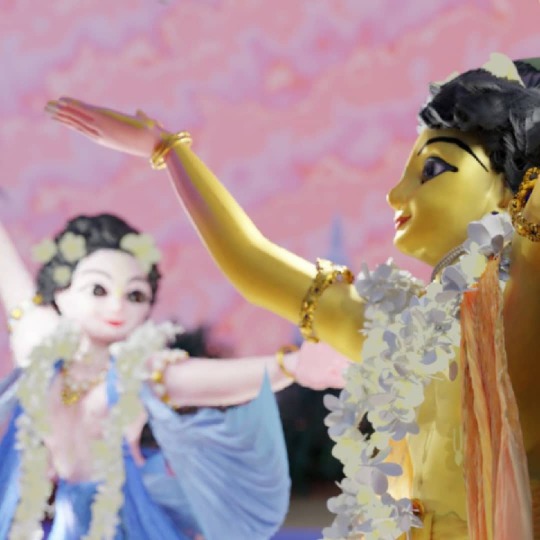
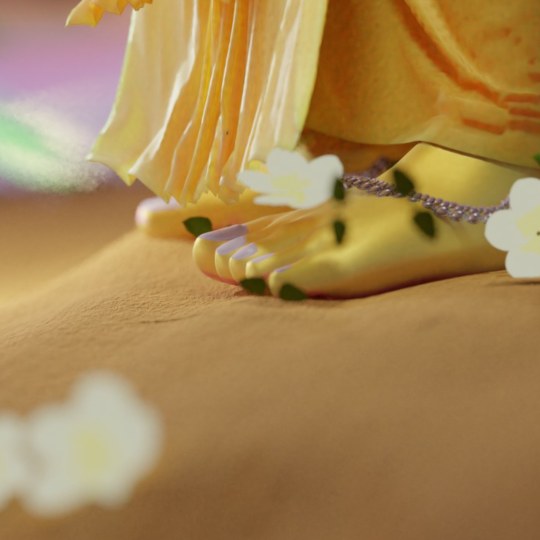

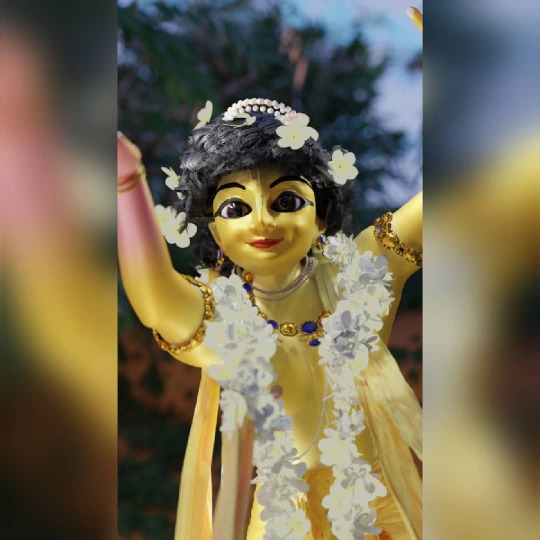
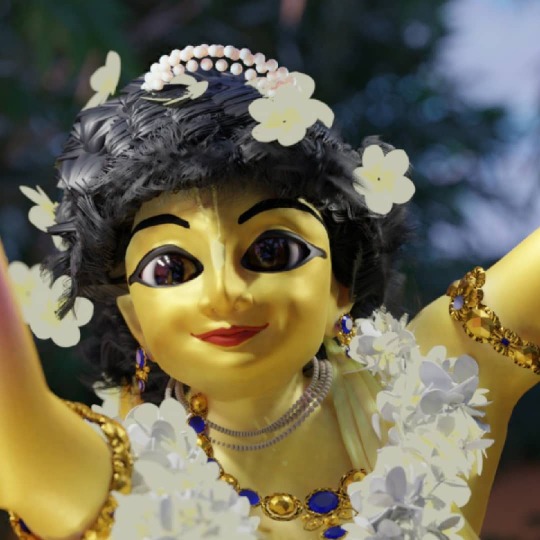



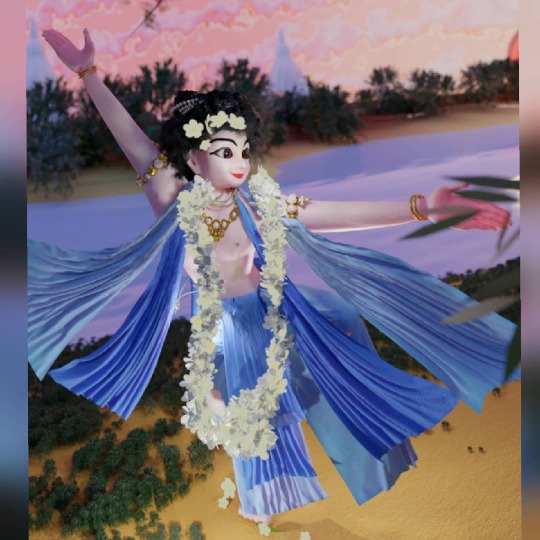
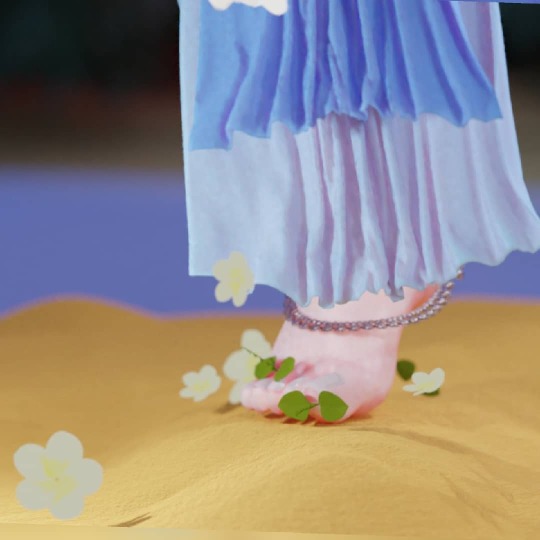
1 note
·
View note
Photo
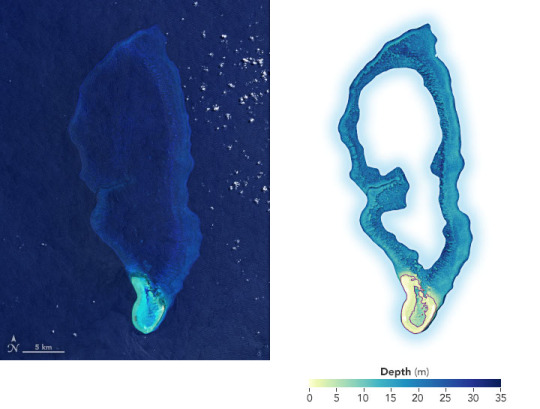

Mapping Shallow Seafloors The waters along the world’s coasts and islands are incredibly important to human activities, yet they are not always well mapped. Coastal waters are often turbulent and murky, as the sand, mud, and sediment on the bottom is constantly in motion. Unless there are regularly dredged channels, it can be difficult and dangerous for ships to travel in shallow water. Making accurate and up-to-date depth charts is time-consuming and expensive, and doing so on a global scale is a monumental task. By combining satellite measurements with ship-based sonar data, a team of researchers is now working to fill the gaps in our seafloor maps. They are using data from NASA’s Ice, Cloud, and land Elevation Satellite 2 (ICESat-2) to accurately measure the depths (bathymetry) of shallow coastal waters, where surveying ships have historically been unable to travel due to safety, expense, or remoteness. The images above show Velasco Reef in the Republic of Palau. The left, natural-color image of the South Pacific reef was acquired by Landsat 8 in 2020; the right image is a digital elevation model created with ICESat-2 data. The map was developed as part of a demonstration study led by remote sensing scientists Lori Magruder of the University of Texas at Austin and Chris Parrish of Oregon State University. They partnered with the Coral Reef Research Foundation in Palau to fuse existing sonar data with their ICESat-2 dataset. Mapping shallow, nearshore areas can be slow and potentially dangerous. Conventional field methods may involve a surveyor standing in shallow water, taking measurements at specific intervals, while at the mercy of waves and currents. Meanwhile, boat-based sonar surveys are inefficient in shallow waters and subject to the dangers of waves, rocks, and reefs. In addition, the National Oceanic and Atmospheric Administration (NOAA) has established Navigable Area Limit Lines (NALL), which define the shoreward limit of their boat-based surveys. The NALL is set at water depths of 3.5 meters (11 feet), and NOAA advises caution to captains maneuvering in shallow areas within the NALL because they are not often mapped, if at all. Sometimes the NALL limit can extend significant distances from shore. These challenges result in many nearshore coastal waters being largely unmapped. The area is nicknamed “the white ribbon” because it appears as white space hugging coasts, shoals, and atolls on bathymetric maps. It essentially represents no data. “The near-coastal area from 0 to 10 meters in depth is notoriously hard to map because a lot of the acoustic sensors that are used in bathymetry do not capture the shallower depths accurately,” said Magruder. “ Near-shore measurements provide a window into the coastal dynamics and processes that are really important.” The maps above show the NALL regions around Velasco Reef and the current water depths as measured by Magruder and Parrish’s team. This use of ICESat-2 data could be a game-changer. The satellite’s main instrument is the ATLAS altimeter, which sends 10,000 laser pulses per second toward Earth’s surface and detects the photons that return in order to determine the height of landmasses and features on it (such as ice sheets, forests, and glaciers). It turns out that ICESat-2’s laser pulses can also penetrate the water column in shallow areas and return measurements from the seafloor. The main mission of ICESat-2 is to map sea ice thickness and ice sheet elevation, as well as the height and density of temperate and tropical forests. Scientists and engineers thought it might be possible to measure ocean bathymetry, but they were not sure until Adrian Borsa, a geodesist at the University of California, San Diego, noticed in 2018 that ICESAT-2 data was picking up seafloor signals around Bikini Atoll in the South Pacific. This finding provoked Parrish and Magruder to make a concentrated effort to use the satellite for near-shore mapping. Because it can observe across the entire globe, ICESat-2 provides broader spatial coverage than sonar-mapping ships. The satellite also collects data from the same location every 91 days, allowing for repeat mapping of areas that previously took great effort to map even once. Beyond Velasco Reef, researchers are using the novel dataset to map near-shore habitats off of Western Australia and around the Gilbert Islands, French Polynesia, Turks and Caicos, and the Bahamas. The methods are even being used to map the shores of Lake Tahoe, California. With a complete and continuous look at near-shore bathymetry, researchers can aid efforts to monitor endangered coral reefs and coastal mangroves, sediment transport after disaster events, carbon storage capacity, water clarity, invasive species, and several other aspects of coastal dynamics. NASA Earth Observatory images by Joshua Stevens, using Landsat data from the U.S. Geological Survey and data from the Shallow Bathymetry Everywhere project. Story by Andi Thomas, with Mike Carlowicz.
1 note
·
View note
Photo
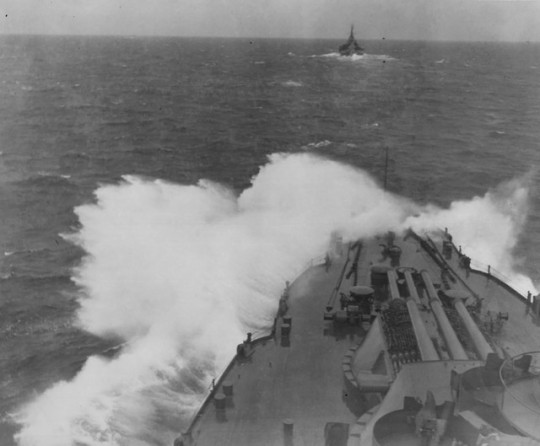
“USS Maryland (BB-46) and Pennsylvania (BB-38) steam together as the battleships of Task Unit 32.5.2 between 6th and 12 September 1944 as they head towards the Palau Islands and the invasion of Peleliu.”
(Source)
#Military#History#USS Maryland#USS Pennsylvania#Battleship#United States Navy#US Navy#WWII#WW2#Pacific War#World War II
107 notes
·
View notes
Text
The Ultimate Guide To Play sa gaming free 300
Researchers have discovered that video gaming may be addictive – a phenomenon referred to as “Internet gaming sickness.” Visit us for sa gaming ฟรี 300.

In gaming addicts, there are useful and structural alterations inside the neural reward machine – a collection of structures related to feeling pleasure, studying, and motivation. Exposing online game addicts to sport-related cues that reason cravings, and monitoring their mind responses, highlighted those modifications – modifications which might be also visible in different addictive disorders.
“We focused on how the mind reacts to video game publicity, however these outcomes do no longer usually translate to real-existence changes,” notes Palaus. The studies into the outcomes of video gaming continues to be in its infancy and scientists are still scrutinizing what components of gaming impact what mind areas and the way.
“It’s in all likelihood that video video games have each superb (on attention, visible and motor abilties) and negative factors (threat of dependancy), and it's miles vital we include this complexity,” Palaus maintains.
Are mind-schooling games beneficial?
A crew of researchers from the Florida State University has said that human beings have to be skeptical of advertisements that promote an boom inside the performance of the brain that outcomes from brain education games. They have said that technological know-how does now not support those claims.
“Our findings and previous research verify there’s very little proof these sorts of games can improve your existence in a significant manner,” says Wally Boot, companion professor of psychology, an expert on age-associated cognitive decline.
People are increasingly more under the affect that mind-training apps will protect them against reminiscence loss or cognitive disorders.
Researchers tested whether gambling mind-schooling games stronger the running reminiscence of gamers and consequently improved different cognitive competencies, inclusive of reasoning, memory, and processing speed – a process scientists call “a long way transfer.” However, this turned into no longer the case.
“It’s feasible to teach human beings to become superb at tasks which you could commonly don't forget widespread operating memory tasks: memorizing 70, 80, even a hundred digits,” explains Neil Charness, professor of psychology and a leading authority on growing older and cognition.
“But these capabilities have a tendency to be very specific and no longer show loads of transfer. The component that seniors, in particular, ought to be worried about is, if I can get excellent at crossword puzzles, is that going to assist me don't forget where my keys are? And the solution is probably no,” he adds.
Charness factors out that if your aim is to improve cognitive characteristic, then cardio exercise may also assist. Some studies has discovered that aerobic hobby instead of intellectual activity enhances the mind.
1 note
·
View note